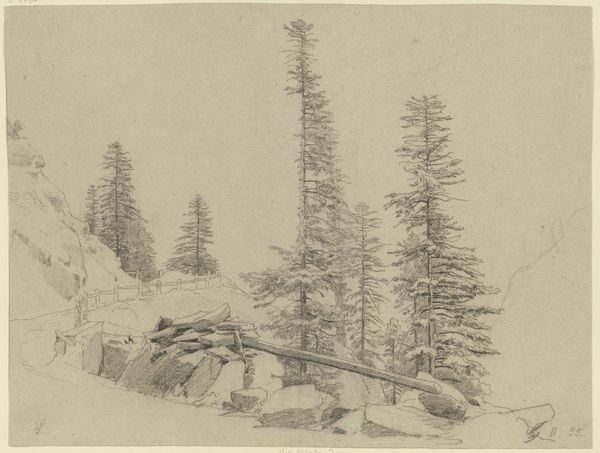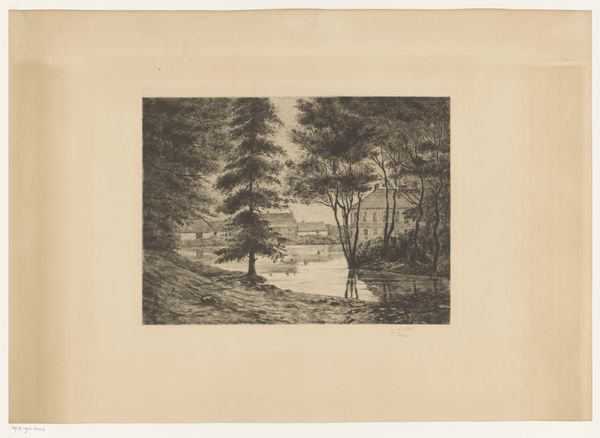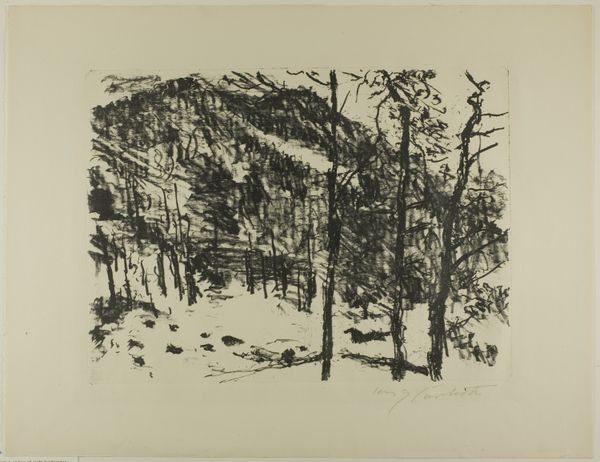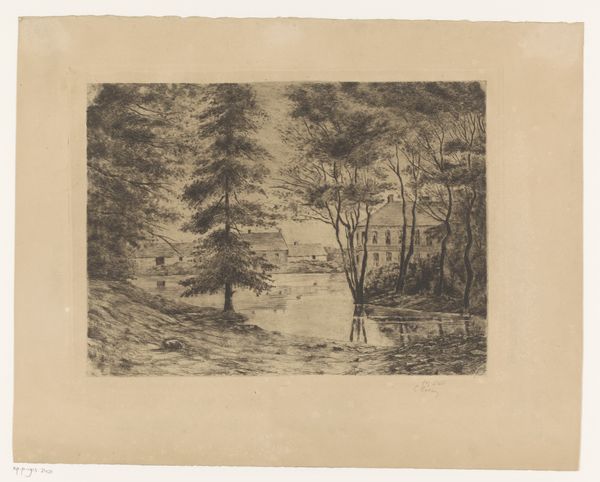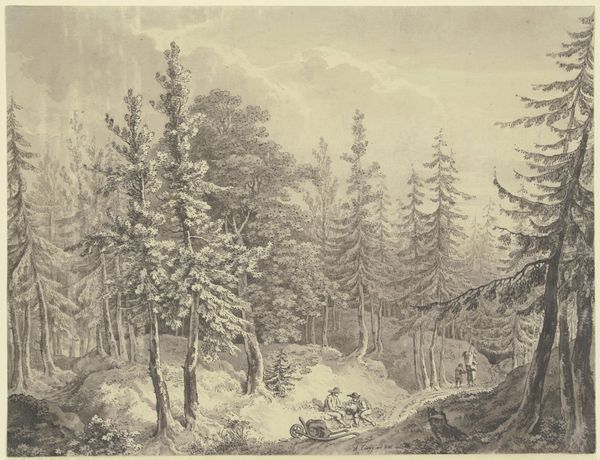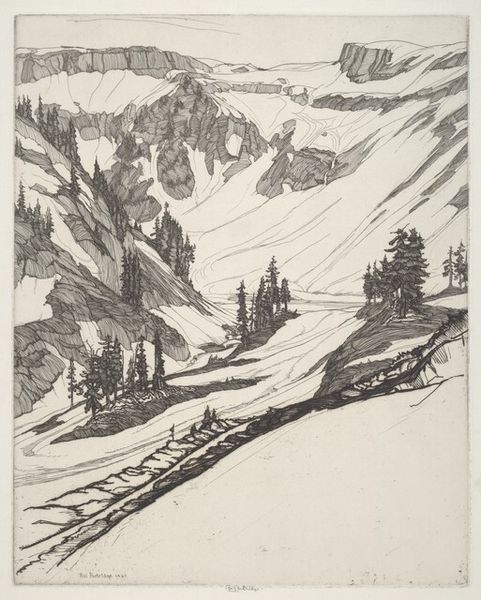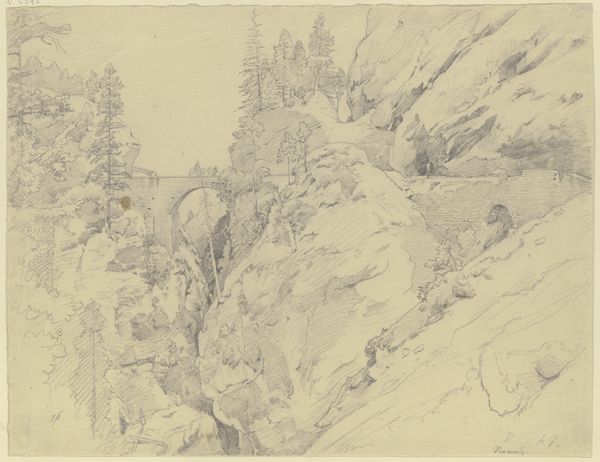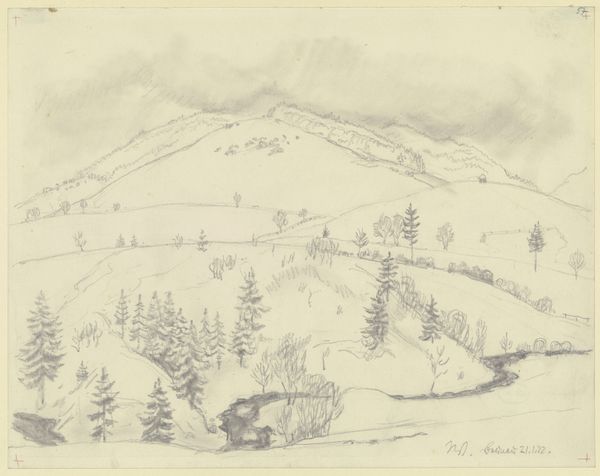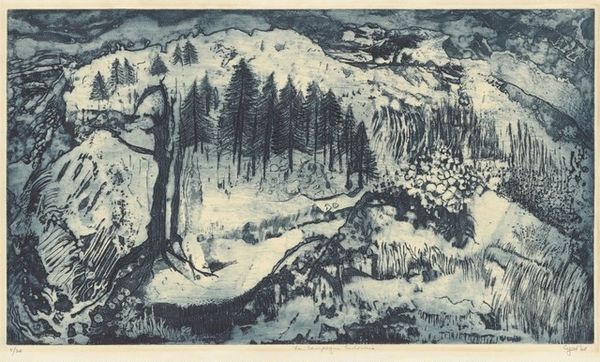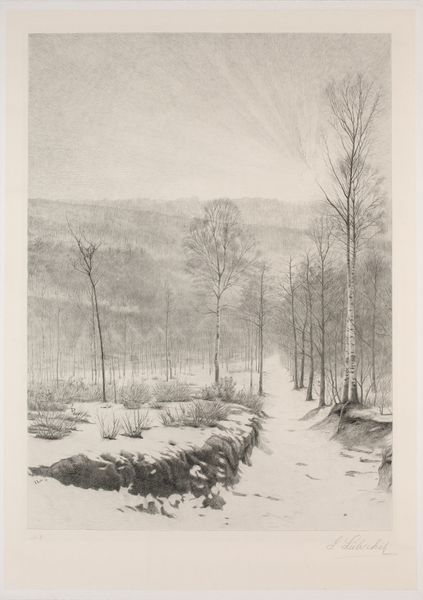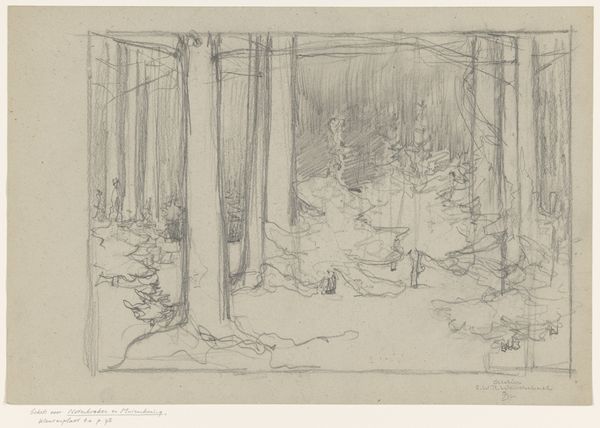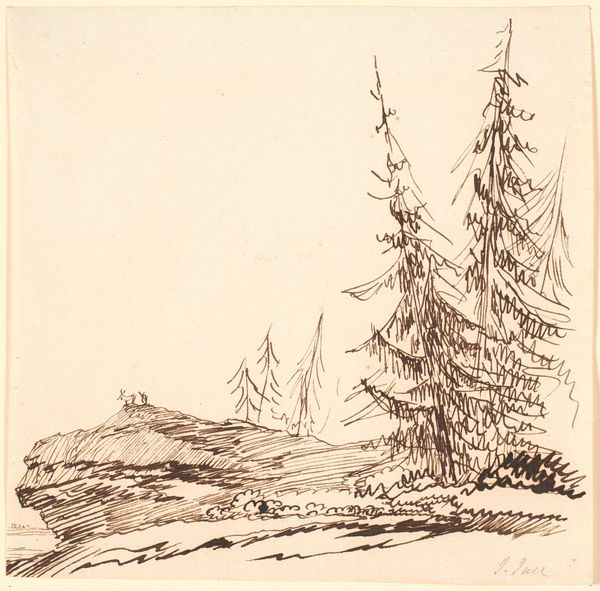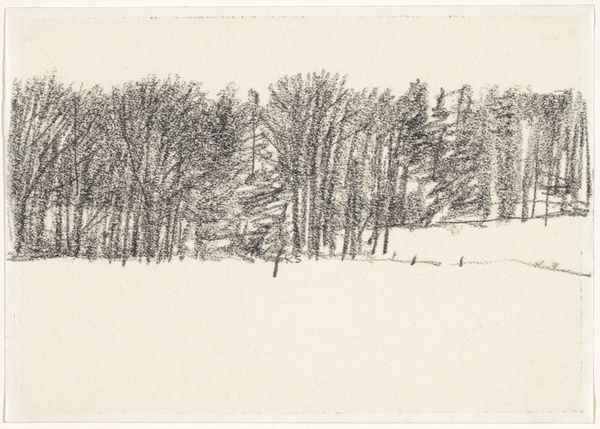
print, etching
#
snow
# print
#
etching
#
landscape
#
geometric
#
line
#
realism
Dimensions: height 246 mm, width 328 mm
Copyright: Rijks Museum: Open Domain
Curator: Up next we have Willem Adrianus Grondhout's 1933 etching, "Winter in Tyrol," here at the Rijksmuseum. Editor: Immediately, there’s something so still and quiet about this image. The stark contrast and heavy reliance on line create an almost unsettling mood—a cold stillness. Curator: I agree. Looking closely at the etching process, the lines define not only the forms—those towering trees, for instance—but also build texture to represent the dense foliage and snow-covered ground. It is this combination of technical skill with the materials and careful artistic control of the press to achieve these lines and gradients that evokes emotion. Editor: Those lines give definition to what seems at first glance like a realistic rendering of a snow-bound scene, and indeed "realism" is one of its styles. Yet, beneath the surface, there is something almost mystical about how starkness suggests loneliness and perhaps an awareness of the changing seasons. These recurring symbols throughout art history of the barren trees, the geometric structure of the wooden fence evoke in the viewer a sense of human connection to nature over time. Curator: Well, the labor invested is quite visible, not only in the image's production, but also implied through the wooden fence that suggests human engagement within this otherwise natural landscape. That is the point: we encounter and mark the materials in order to form them and place them within the grand scene of things, changing and controlling how people view the whole and the parts that comprise it. Editor: I wonder if Grondhout chose to depict Tyrol in winter specifically to play on our cultural memory of winter landscapes. He knew these forms were visually interesting in and of themselves, yet, also symbolically carried themes of isolation and introspection—which really seem prominent in the period. Curator: A very insightful comment about both materials and meaning! Editor: A final note: it definitely leaves you with a reflective sentiment about how art carries these echoes and reflections.
Comments
No comments
Be the first to comment and join the conversation on the ultimate creative platform.

